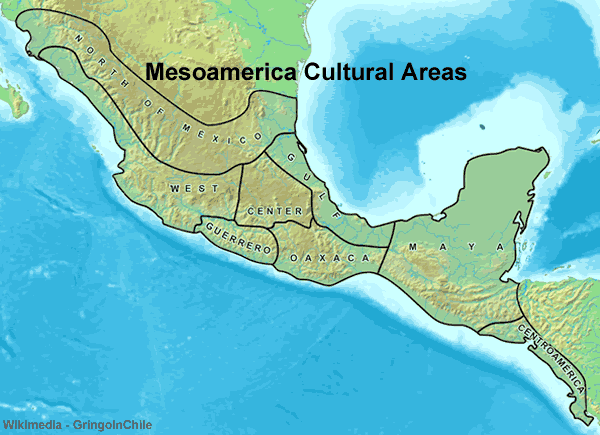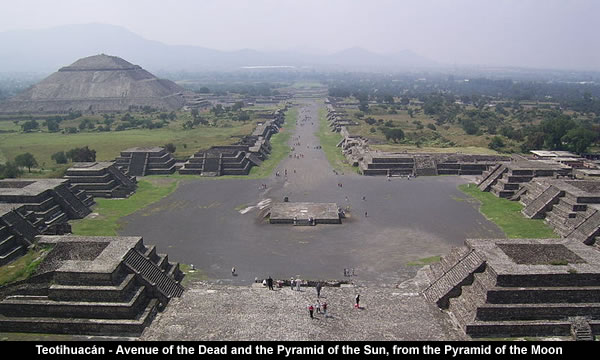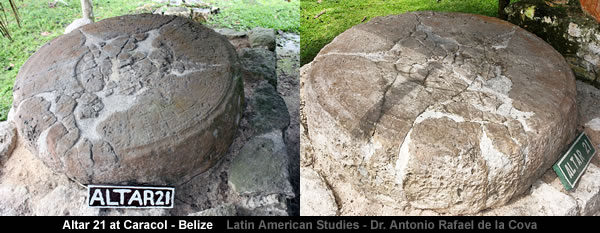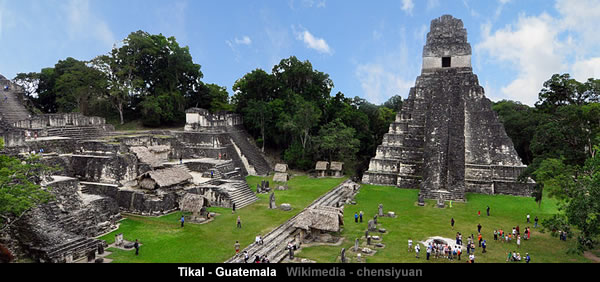
Researching European History during the 1st Millennium is fraught with difficulties because the historical narrative was originally written by the Machiavellian Monasteries before being transmogrified [as require] to suit the needs of the Meddling Monarchies and the Anaemic Academics.
Working backwards through the mainstream historical narrative we arrive at the Heinsohn Horizon in the 930s where the mainstream narrative falls into The Academic Abyss and degenerates into fiction, fantasy and fabrication for a period of 700 [phantom] years.
See: https://malagabay.wordpress.com/2015/07/01/the-heinsohn-horizon-the-academic-abyss/
Unravelling the tangled web of deceit that is European History during the 1st Millennium is also fraught with difficulties because it’s [usually] impossible to differentiate between fact from fiction – especially with the Anaemic Academics rigidly enforcing their predetermined story-lines and gradualist mindset that excludes [major] natural catastrophes.
Unsurprisingly, Revisionist Historians are in disarray as they battle over which parts of the mainstream narrative are fact or fiction because they can’t agree on where to find solid ground in the festering swamp that is European History during the 1st Millennium.
Therefore, for my own information, I step back and reach for my trusty Japanese Isotopic Tree Thermometer which is the only 1st Millennium Chronology I’ve encountered that hasn’t been corrupted by Settled Scientists or interfered with by Anaemic Academics.
In 1976 Leona Libby introduced the world to Isotopic Tree Thermometers.
Libby showed that the atmospheric ratio of stable hydrogen and oxygen isotopes is preserved in tree-rings and demonstrated that this isotopic ratio is determined by atmospheric temperatures [at the time of formation].
…
The isotopic information Libby extracted from an Old Japanese Cedar indicated that temperatures have fallen by about 1.5 °C in the last 1,800 years.
See: https://malagabay.wordpress.com/2015/11/19/isotopic-tree-thermometers/
This Old Japanese Cedar shows there were 3 major outlier events in the 1st Millennium.
Roman Event 250 AD
This rather amorphous event during the 3rd century has its nadir around 250 AD and it is loosely associated with the equally amorphous Crisis of the Third Century in European History.The Crisis of the Third Century, also known as Military Anarchy or the Imperial Crisis, (AD 235–284) was a period in which the Roman Empire nearly collapsed under the combined pressures of invasion, civil war, plague, and economic depression.
Justinian Events 550 AD
The smooth and rapid profile of this decline and recovery in temperatures suggests multiple cosmic impacts triggered a nuclear winter style response and it is associated with the Plague of Justinian in European History.The Plague of Justinian (541–542) was a pandemic that afflicted the Eastern Roman (Byzantine) Empire, especially its capital Constantinople, the Sassanid Empire, and port cities around the entire Mediterranean Sea.
https://en.wikipedia.org/wiki/Plague_of_Justinian
The extreme weather events of 535–536 were the most severe and protracted short-term episodes of cooling in the Northern Hemisphere in the last 2,000 years.
…
In 2009, Dallas Abbott of Columbia University’s Lamont–Doherty Earth Observatory in New York published evidence from Greenland ice cores that multiple comet impacts caused the haze.https://en.wikipedia.org/wiki/Extreme_weather_events_of_535%E2%80%93536
Nuclear winter (also known as atomic winter) is a largely hypothetical global climatic effect of city and natural wildfire firestorms.
Heinsohn Event 900 AD
This rather amorphous event with its nadir around 900 AD is associated with the Heinsohn Horizon and the Academic Abyss in European History.Working backwards through the mainstream historical narrative we arrive at the Heinsohn Horizon in the 930s where the mainstream narrative falls into the Academic Abyss and degenerates into fiction, fantasy and fabrication for a period of 700 [phantom] years.
See: https://malagabay.wordpress.com/2015/07/01/the-heinsohn-horizon-the-academic-abyss/
Thus armed with my trusty Japanese Isotopic Tree Thermometer [and its three 1st Millennium outlier events] it’s time to gird my loins for a trip back in time to Mesoamerica where the Anaemic Academics have been busy piercing together their historical narrative.
Mesoamerica is a region and cultural area in the Americas, extending approximately from central Mexico to Belize, Guatemala, El Salvador, Honduras, Nicaragua, and northern Costa Rica, within which pre-Columbian societies flourished before the Spanish colonization of the Americas in the 15th and 16th centuries.
https://en.wikipedia.org/wiki/Mesoamerica

The Mesoamerican Chronology for the 1st Millennium has been very neatly sliced and diced into bundles that all start and end with double ohs.
The sliced and diced bundles generally reflect the 3 outlier events although the mainstream has experienced some problems grappeling with the Heinsohn Event around 900 AD.
https://en.wikipedia.org/wiki/Mesoamerican_chronology
In archaeology, the classic Maya collapse refers to the decline of Maya civilization and abandonment of Maya cities in the southern Maya lowlands of Mesoamerica between the 8th and 9th centuries, at the end of the Classic Mayan Period.
Preclassic Maya experienced a similar collapse in the 2nd century.
…
Some 88 different theories or variations of theories attempting to explain the Classic Maya Collapse have been identified.
…
Rather than the decline of Teotihuacan directly preceding the collapse of the Maya, their decline is now seen as contributing “to the 6th century ‘hiatus’”.
Establishing an overview of Mesoamerica during the 1st Millennium is achieved by following the links in the Wikipedia chronology and then typing the developmental milestones into Excel.

When the events are sorted into date order it becomes immediately apparent that the three outlier events during the 1st Millennium are precisely aligned with many of the developmental milestones in Mesoamerica.
Selecting a slightly larger brush stroke of plus or minus 50 years reveals that the three outlier events during the 1st Millennium shaped Mesoamerican history.

Click here to view larger image
The most tangible outlier event in Mesoamerica was the cosmic Justinian Events [around 550 AD] which are associated with some humorously tragic mainstream interpretations of the Sky Witness, Lord Water and “star-war” events.
The city may have lasted until sometime between the 7th and 8th centuries AD, but its major monuments were sacked and systematically burned around 550 AD.
https://en.wikipedia.org/wiki/Teotihuacan
In 561, the king now known as Sky Witness installed a ruler at the site of Los Alacranes. Sky Witness played a major part in the political events of the Maya region.
He became the overlord of the city of Caracol, to the south of Naranjo, which had previously been a vassal of Tikal.
In 562, according to a damaged text at Caracol, Sky Witness defeated Tikal itself and sacrificed its king Wak Chan K’awiil, thus ending his branch of the royal dynasty at Tikal.
This catastrophic defeat began a 130-year hiatus for Tikal, reflecting an extended period of dominance by Calakmul.
https://en.wikipedia.org/wiki/Calakmul
Lord Water (Yajaw Te’ K’inich II) acceded to power in AD 553 under the auspices of Tikal’s Lord Double Bird (Wak Chan K’awiil).
Then, in AD 556 Tikal enacted a ch’ak (axe) war event, and defeated Caracol; this caused Lord Water to enact the first known star-war event in 562 (9.6.8.4.2), and defeated Tikal’s Lord Wak Chan K’awiil (Double Bird).
These poorly understood star war conflicts are usually associated with long hiatuses and the fall of dynasties.
https://en.wikipedia.org/wiki/Caracol
http://www.latinamericanstudies.org/caracol-altar.htm
The “Tikal hiatus” refers to a period between the late 6th to late 7th century where there was a lapse in the writing of inscriptions and large-scale construction at Tikal.
…
This hiatus in activity at Tikal was long unexplained until later epigraphic decipherments identified that the period was prompted by Tikal’s comprehensive defeat at the hands of Calakmul and the Caracol polity in AD 562, a defeat that seems to have resulted in the capture and sacrifice of the king of Tikal.The badly eroded Altar 21 at Caracol described how Tikal suffered this disastrous defeat in a major war in April 562.
It seems that Caracol was an ally of Calakmul in the wider conflict between that city and Tikal, with the defeat of Tikal having a lasting impact upon the city.
Tikal was not sacked but its power and influence were broken.
https://en.wikipedia.org/wiki/Tikal
During the Hiatus period (about 600 AD) between Early Classic and Late Classic, Uaxactun experienced a lack of architectural activity and ceramic production, which coincided with the decline of the power of Teotihuacán and Tikal.
There was no erection of dedicatory monuments between 554 AD and 711 AD.
https://en.wikipedia.org/wiki/Uaxactun

In other words:
The Japanese Isotopic Tree Thermometer chronology provides a robust high-level framework for structuring the historical narrative of the 1st Millennium.







Lots of interesting ideas to consider here. But… were there three catastrophes in the 1st millennium? Or only one, incorrectly dated to three different centuries? The Heinsohn Thesis (HT), which makes its case with stratigraphy and archaeology, says one catastrophe only. The Roman Event (the western empire was extinguished in days, perhaps hours), the Justinian Event (Byzantium was able to recover) and the 930 Event all happened simultaneously, circa 930. Rome, in other words, fell about 1080 years ago, devastated by a natural calamity. Heinsohn dates the destructions of the Bronze-Iron interchange to about 300 BCE. If Heinsohn is right, then the earlier catastrophe markers in the Japanese cedar data might be indications of earlier disasters, or disasters specific to Japan or Asia.
The problem with assigning calendar dates to tree rings is that the calendar is assumed to be the primary benchmark.
I’m reading Libby’s book and they actually don’t sample individual tree rings but batches of 5 or so rings in order to have enough sample to analyse.
They also use Fourier analysis to detect cyclical patterns in the data, but any patterns are predetermined by the established calendar chronology; lists of circular reasoning I suspect.
So how were the Japanese Cedar samples produced? Similar to Libby et al? Composites?
If the samples are 5 ring composites, implying 5 seasons, then significant variations in the data, such as the one at 630 CE (to the right of the Byzantine event) I would interpret as a single event but of necessity occurring within a 5 year period. That I would guess is the Heinsohn Horizon and the Roman Period terminating event. All depends on when to start counting the rings, but they are not rings but 5 year composites, so the isotope ratios cannot be linked to seasons either but maybe pseudo seasons derived from the 5 ring composites.
And here the Burned House Syndrome is relevant – one large event that torched everything, or multiple events – and how arrived at ? Stratigraphy? Many stacked layers in one location, or single layers from many locations but concatenated chronologically; It’s Maimonides all over again.
The rings in the Japanese cedar used by Leona Libby were counted and then verified by carbon-14 dating.
The sampling is far from perfect BUT the chronology is actual based on counting rings from a single tree.
This is the only single tree chronology I have encountered that doesn’t relay on the usually Settled Science tricks like bridging and aggregating groups of trees.
Overall, its not perfect BUT the alternatives all reply upon very dubious Settled Science.
Perhaps, one day, someone will follow in the footsteps of Leona Libby and produce a chronology with a smaller sample size.
But I’m not holding my breath.
PS
The above analysis is meant to be a two-way affair of compare and contrast.
For me, the surprise was that Leona Libby’s Japanese Cedar and Mainstream Mesoamerica are fairly well aligned [within +/- 50 years] given the inherent problems of dating and the human preference for nice round numbers – especially those ending with 50s and 00s.
A follow-up thought on the Japanese Cedar 5-year sampling is that [perhaps] this level of sampling isn’t such a problem [in this context] because it will capture large scale [global] events e.g. an “impact event” with a truly global effect is very unlikely to be simply done and dusted in a single growing season.
Yes, Libby’s work seems pretty reasonable and they used at max 3 rings for the sampling process, so they report.
Incidentally I wonder if we slotted in the neolithic period after the Roman termination and before the Heinsohn event. Gunnar is correct that ~ 700 years are missing stratigraphically. This might solve the missing stratigraphy problem.
It dawned on me that when we threaten anyone by bombing them into the stone age, then that is probably what happened to the Romans, around the area where the burned houses were etc and where neolithic strata contain Roman artifacts etc. Basically means throwing neodarwinism into the historical scrapheap.
Pingback: North American Guide to the First Millennium | MalagaBay
Pingback: Justinian’s Raging Bulls | MalagaBay
Pingback: The Atomic Comet: Death In The Clouds | MalagaBay